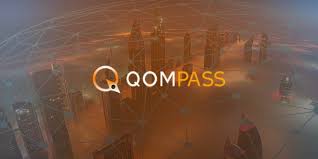Cardstack: Take the best of the existing ancd reate a new concept
There are facts that prove that men love the eyes. In Hinduism they tend to believe that within each of us there is energy of the opposite sex. It attracts UX's attention. A joke, but in every joke it's just a joke. The bottom line is that the friendly app interface is important to everyone, regardless of any difference.
For three years, millions of dollars for research and development, the author Cardstack create and release "full stack" apps with open source and infrastructure that provide Cohesive User Experience (CUE), which includes blockbusters and clouds.
Why is it called a "card" stack? Because the team sees the paradigm boundary of one icon per app in the world of blockbusters, where many decentralized and traditional applications interact.
Suppose managing crypto assets can be automated behind the scenes, but most first generation user interfaces for dApps are created as standalone web applications that interact with chain blocks via browser plug-in, system tray or program menu.
Each dApp works independently and looks specifically with its coins.
Thus, the simplest ideal of dApps is transformed into a complex network of applications on a variety of intelligent contract platforms with different approaches to the user interface and different levels of requirements.
Even for experienced web application users, this is certainly more difficult than managing 15 different subscriptions of cloud-based applications (SaaS).
One-time mobile app purchases are replaced by monthly subscription models.
This business model turns out to be the best for mobile application developers and cloud services (SaaS), because subscription revenue is consistent with the cost of developing and maintaining the current software.
And from the user side, the app developer must add a function to match the competition, run a new version of the underlying operating system, install critical security updates, support their integration with the ever-changing third-party APIs, and so on.
For SaaS software vendors, one of the biggest problems is attracting and retaining customers.
There are them and the users. Analyzing the needs of both parties, Cardstack's authors formulated a project mission in 2014, announcing their intention to build a software architecture and design system that could serve as an alternative basis for decentralized applications.
It has been determined that the concept of "card" should be at the heart of this approach and there must be a large number of ecosystem participants to work together or compete, while providing a common user experience.
Cardstack uses tools found by centralized giants, and cloud resources worldwide to create a decentralized ecosystem of programs in the future.
And put the following business model for the existence of stable software. In the future, in the software market, app buyers make unusual deals with a variety of software developers, cloud hosting providers and coin proprietary apps.
The buyer proposes to cover all material costs to run the application if the fee is directly related to the use.
In addition to covering these basic maintenance costs, buyers will also pay royalties that are shared between those who developed the software, as a reward for initial creation and continued support of all components that provide this particular application.
As long as the buyer continues to pay these combined costs, consisting of material value plus royalties, the software continues to operate in an environment or device that corresponds to the buyer's choice.
In this scheme, the application software can be considered economically sustainable, because every buyer bears the cost, and the software does not spend limited resources (venture capital, corporate investment, one-time sales) for normal operations.
In addition, there is an incentive pool based on well-designed incentives, which leads to a gradual increase in specified software. It is a cost-sharing and remuneration function that allows software to be sustainable and survive from market turmoil.
With recent advances in blocking and emerging programmable chain logic, it becomes possible to improve agreement for all participants by rebuilding their relationship into an intelligent contracting network that interacts. Cardstack will switch from micropayment, as it has been proven that:
users hate to have many small payments;
the current blocker has not been able to quickly track every discrete action performed by millions of users.
Cardstack recommends using smart contracts to calculate transaction costs on a regular basis, such as receiving monthly invoices and paying bills with credit cards.
With an ingenious contract, you can reorder questions about who sent someone an account when this account was paid, and how this payment passed the participant's network effectively.
WEBSITE|ANNTHREAD | WHITEPAPER | TWITTER | FACEBOOK | TELEGRAM | REDDIT | BLOG | CRYPTOCOMPARE
''Segards


Komentar
Posting Komentar